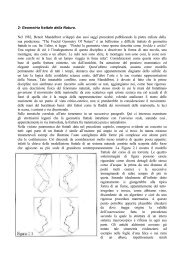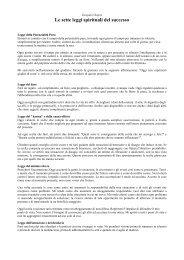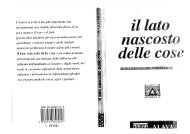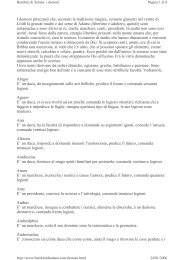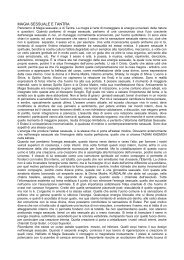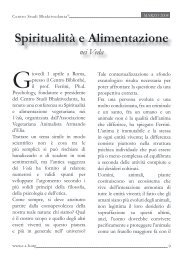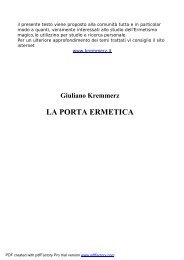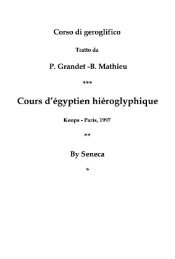200 ~ TALIBANbut all the Persian-speaking ethnic groups who were resdomination.Iran had a natural link with the Tajiks - theythe same ancient race and speak the same language - butStontaS ^d been incensed by Ahmad Shah Masud's brutal attacks* t^Hazaras in Kabul in 1993. Nevertheless, Tehran now reahzedthatunlel it backed the non-Pashtuns, Pashtun Sunnis would dominateAfghanistan. In 1993, for the first time, Iran began to give substantialmilitary aid to the President Burhanuddin Rabbani in Kabul and theUzbek warlord General Rashid Dostum and urged all the ethnic groupsto join with Rabbani. ,,Iran's new strategy intensified its conflict of interest with Pabstan. Islamabadwas determined to get its Pashtun proteges into Kabul and boththe Pakistanis and the Saudis were determined to keep the Hazaras outof any power-sharing arrangement. Pakistan's adroit diplomacy in the1980s in providing a balance between Saudi and Iranian interests wasnow abandoned in favour of the Saudis.The collapse of the Soviet Union and the opening up of Central Asiahad given Iran a new impetus to end its international isolation. Iranmoved swiftly into Central Asia with a path-breaking trip by ForeignMinister AH Akbar Velayti in November 1991, who signed an agreementto build a railway line between Turkmenistan and Iran. But here too theUSA tried to block Iran with US Secretary of State James Baker declaring1992 that Washington would do everything to inblock Iranian influencein Central Asia. 6 The neo-communist i rulers l in Central Asia were initiallydeeply suspicious of Iran, fearing it wanted to spread Islamic fundamental-But Iran resisted this temptation and also forged close ties with Russia,following the 1989 ice-breaking visit to Tehran by Soviet Foreign MinisterEduard Shevardnadze when he met with Ayatollah Khomeini. The Ayatollah'ssanction of closer Iranian-Soviet ties just before his death, gavcrthenew Russia a legitimacy in Iranian eyes. Also between 1989 and 1993Russia provided Iran with US$10 billion worth of weapons to rebui d itsmilitary arsenal. Iran improved its standing in the region by forging linkswith other non-Muslim former Soviet states such as Georgia, Ukraine andArmenia. Tehran declined to support Azerbaijan in its war with Armenia,even though 20 per cent of the Iranian population « Azen and helpedRussia and the UN to end the civil war in Tajikistan. 7 Crucially, ran andthe CARs shared a deep suspicion of Afghan-Pashtun fundamentalism andthe support it received from Pakistan and Saudi Arabia. Thus, an alliancebetween Iran, Russia and the CARs in support of the non-Pashtun ethnicgroups existed well before the Taliban emerged.In contrast, Saudi Arabia made few state-to-state attempts to improverelations with Russia or the CARs. The Saudis took nearly four years
202 TALIBAN SHIA VERSUS SUNNI: IRAN AND SAUDI ARABIA 203Taliban leader Mullah Rabbani met with King Fahd in Riyadh and praisedthe Saudis effusively. 'Since Saudi Arabia is the centre of the Muslimworld we would like to have Saudi assistance. King Fahd expressed happinessat the good measures taken by the Taliban and over the impositionof Sharia in our country,' Rabbani said. 13 Meeting King Fahd five monthslater, Taliban leaders said the Saudis had promised more aid. 'King Fahdwas too kind. The Saudis have promised us as much as they can give us,'said Mullah Mohammed Stanakzai. 14Riyadh's support for the Taliban made them extremely reluctant toexert any pressure on the Taliban to deport Osama Bin Laden, eventhough the USA was urging them to do so. Only when Prince Turki waspersonally insulted by Mullah Omar in Kandahar did the Saudis curtaildiplomatic links with the Taliban. Significantly, it was a personal insultthat guided Saudi decision-making rather than an overall change in foreignpolicy. Saudi Arabia still appeared to have learnt little from its negativeexperiences of trying to export Wahabbism.Saudi Arabia's initial support for the Taliban convinced Iran that theUSA was also backing them in an intensification of its 1980s policies tosurround Iran with hostile forces and isolate it. The USA, according toTehran, had a new aim to promote oil and gas pipelines from CentralAsia which would bypass Iran. After the Taliban captured Kabul, Iraniannewspapers echoed the long-held views of officials. 'The Taliban captureof Kabul was designed by Washington, financed by Riyadh and logisticallysupported by Islamabad,' wrote the Jomhuri Islami newspaper. 15However, for Tehran the real fall-out with Afghanistan was internal.The leadership was divided between hardliners, who still hankered aftersupporting Shias worldwide and moderates who wanted a more measuredsupport for the anti-Taliban alliance and less confrontation with the Taliban.Iran suffered from the same problems as Pakistan in having multipledepartments and lobbies trying to push their personal vested interests inthe making of Afghan policy. The Iranian military, the RevolutionaryGuards, the intelligence agencies, the Shia clergy and the powerful Bunyadsor Foundations which are run by the clergy and control much of thestate sector economy and also finance foreign policy adventures with theirlarge, unaccounted funds, were just some of the contending lobbies.All these lobbies had to be kept on an even keel by the Foreign Ministryand Alaeddin Boroujerdi, the Deputy Foreign Minister for Afghanistan.Boroujerdi, who ran Afghan policy for more than a decade was asmart diplomat. He had outlasted the earlier regime of President AkbarAH Rafsanjani to take up the same appointment under President Khatami,until he was forced to resign after the Iranian diplomats were killed inMazar. He could be both a dove and a hawk on Afghanistan - dependingon whom he was talking to and he also had to ensure that Iran's conflictof interests with Pakistan and Saudi Arabia did not get out of hand. Incontrast, in Saudi Arabia, the Foreign Minister Prince Saud al Faisal,deferred Afghan policy to his younger brother Prince Turki and SaudiIntelligence. 16The collapse of the Afghan state increased Iran's own insecurity bycreating a massive influx of drugs and weapons. The spectre of Afghanistan'sethnic conflict threatened to spill into Iran along with the economicburden of supporting millions of Afghan refugees, who were deeply dislikedby ordinary Iranians. There are an estimated three million heroinaddicts in Iran - the same number as in Pakistan although Iran, with 60million people, has half the population of Pakistan. The smuggling of fuel,foodstuffs and other goods out of Iran to Afghanistan created losses inrevenue and periodic economic problems - just when Iran faced a dramaticfall in revenue because of the drop in world oil prices and wastrying to rebuild its economy.Of even greater concern to the Iranians was that, since 1996, the Talibanwere also secretly backing Iranian groups who were anti-regime. InKandahar, the Taliban had given sanctuary to Ahl-e-Sunnah Wai Jamaat,which recruited Iranian Sunni militants from Khorasan and Sistan provinces.Its spokesmen from Iran's Turkmen, Baluchi and Afghan minorities,claimed that their aim was to overthrow the Shia regime in Tehranand impose a Taliban-style Sunni regime. This was a bizarre aspirationgiven that over 90 per cent of Iran's population was Shia, although it presumablyhelped to bolster support among the small band of insurgents.The group received weapons and support from the Taliban and the Iranianswere convinced that the Pakistanis were also sponsoring them.Iranian military aid to the anti-Taliban alliance escalated after the fallof Kabul in 1996 and again after the fall of Mazar in 1998. However, Iranhad no contiguous border with the alliance and was forced to either flyin or rail supplies to Masud's forces, which involved getting permissionfrom Turkmenistan, Uzbekistan and Kyrgyzstan. In 1998, Iranian Intelligenceflew in plane-loads of arms to Ahmad Shah Masud's base in Kuliabin Tajikistan and Masud became a frequent visitor to Tehran. The dangerwhich the Iran supply line faced was highlighted when Kyrgyzstan's securityforces stopped a train in October 1998, in which were discovered 16railcars loaded with 700 tons of arms and ammunition. The train hadbeen travelling from Iran to Tajikistan with the weapons disguised ashumanitarian aid. 17The Taliban were incensed with Iran's support for the alliance. In June1997, the Taliban closed down the Iranian Embassy in Kabul, accusingIran of destroying peace and stability in Afghanistan'. 18 A Taliban statementin September 1997 after their failure to capture Mazar was explicit.'Iranian planes in gross violation of all internationally accepted norms
- Page 1 and 2:
YALE NOTA BENE"The broader storyher
- Page 3 and 4:
TalibanMilitant Islam,Oil and Funda
- Page 5 and 6:
Vi ~ CONTENTSChapter 8A Vanished Ge
- Page 7 and 8:
AFGHANISTAN•^ UZBEKISTAN J TAJIKI
- Page 9 and 10:
2 ~ TALIBANaccounts for some 40 per
- Page 11 and 12:
"6 ~ TALIBANgas riches of landlocke
- Page 13 and 14:
10 ~ TALIBANgious mix that was to m
- Page 15 and 16:
Part 1History of theTaliban Movemen
- Page 17 and 18:
18 ~ ISLAM OIL AND THE NEW GREAT GA
- Page 19 and 20:
22 ~ ISLAM OIL AND THE NEW GREAT GA
- Page 21 and 22:
26 ~ ISLAM OIL AND THE NEW GREAT GA
- Page 23 and 24:
30 ~ ISLAM OIL AND THE NEW GREAT GA
- Page 25 and 26:
34 TALIBANKabul- Hikmetyar had alli
- Page 27 and 28:
38 ~ TALIBANrHERAT 1995: GOD'S INVI
- Page 29 and 30:
42 ~ TALIBANdo manage to take Kabul
- Page 31 and 32:
J46 ~ TALIBANgreater weight to UN e
- Page 33 and 34:
50 ~ TALIBANas they hung from steel
- Page 35 and 36:
54 ~ TALIBANthey would help rearm t
- Page 37 and 38:
58 TALIBANGul Mohammed Pahlawan, Gh
- Page 39 and 40:
62 TALIBAN2,500 Taliban, who had re
- Page 41 and 42:
66 TALIBANshould throw all aid agen
- Page 43 and 44:
70 ~ TALIBANyears of battle and hel
- Page 45 and 46:
74 ~ TALIBANThousands of Hazaras we
- Page 47 and 48:
78 TALIBANhas become a plague,' sai
- Page 49 and 50:
NEW STYLE FUNDAMENTALISM OF THE TAL
- Page 51 and 52:
86 TALIBANsity students - Hikmetyar
- Page 53 and 54:
90 TALIBANSharia was heavily influe
- Page 55 and 56:
94 TALIBANinflamed the debate in th
- Page 57 and 58: 98 TALIBANizing factor of Islam, it
- Page 59 and 60: 102 TALIBANadministrations made the
- Page 61 and 62: 106 ~ TAUBANfrom working, but it no
- Page 63 and 64: TALIBANUniversity, she held down a
- Page 65 and 66: 114 TALIBAN A VANISHED GENDER 115Ta
- Page 67 and 68: 118 TALIBANUS$1,300 - a small fortu
- Page 69 and 70: 122 TALIBANper cent of the total Pa
- Page 71 and 72: 126 TALIBANequipment, no electricit
- Page 73 and 74: 130 ~ TALIBANfight with the Mujahed
- Page 75 and 76: 134TALIBANAugust 1996 noted that Bi
- Page 77 and 78: 138 ~ TALIBANwho were using the Kho
- Page 79 and 80: 11DICTATORS AND OILBARONS: THE TALI
- Page 81 and 82: 146 TALIBAN DICTATORS AND OIL BARON
- Page 83 and 84: 150 — TALIBANgrowth of beards and
- Page 85 and 86: 154TALIBAN1998 when international o
- Page 87 and 88: 158 ~ TALIBANaround Afghanistan? Af
- Page 89 and 90: 162 TALIBAN ROMANCING THE TALIBAN 1
- Page 91 and 92: 166 TALIBAN ROMANCING THE TALIBAN 1
- Page 93 and 94: ROMANCING THE TALIBAN 2: 1997-99 17
- Page 95 and 96: 174 — TALIBANnon-Russian pipeline
- Page 97 and 98: 178 — TALIBANROMANCING THE TALIBA
- Page 99 and 100: 182 ~ TALIBANApril 1999. 'The US ha
- Page 101 and 102: 186 ~ TALIBANters or the transport
- Page 103 and 104: 190 ~ TALIBANThis Wild West of free
- Page 105 and 106: 194 ~ TALIBANgovernance. Pakistani
- Page 107: 198 TALIBAN SHIA VERSUS SUNNI: IRAN
- Page 111 and 112: 206 — TALIBANin Afghanistan - to
- Page 113 and 114: 210 — TALIBANand antagonism. The
- Page 115 and 116: 214 ~ TALIBANdrawn since 1996 - a P
- Page 117 and 118: 218 ~ TALIBANated and severely puni
- Page 119 and 120: Origins of Members of the Taliban M
- Page 121 and 122: APPENDIX 3 ~ 227Appendix 3A CHRONOL
- Page 123 and 124: 230 ~ TALIBANgraves near Shebarghan
- Page 125 and 126: 234 ~ TALIBAN8 June. US FBI places
- Page 127 and 128: 238 ~ TALIBAN1995 January16 MarchAp
- Page 129 and 130: 242 ~ TALIBANJune21 August10 Septem
- Page 131 and 132: 246 ~ TALIBANDupree, Nancy Hatch, A
- Page 133 and 134: 250 ~ NOTESChapter 31 Interview wit
- Page 135 and 136: 254 ~ NOTESmuddin, Religious Police
- Page 137 and 138: 258 NOTES13. The Japanese company M
- Page 139 and 140: 262 ~ NOTES28. Waxman, Sharon, 'A c
- Page 141 and 142: Abbas, Mulla Mohammed 22,61,100Abda
- Page 143 and 144: INDEX - 270Hazaras (continued)burea
- Page 145 and 146: INDEX ~ 274nF»r\/FaliViar» milita
- Page 147: INDEX ~ 278Talibans (continued)Sunn




